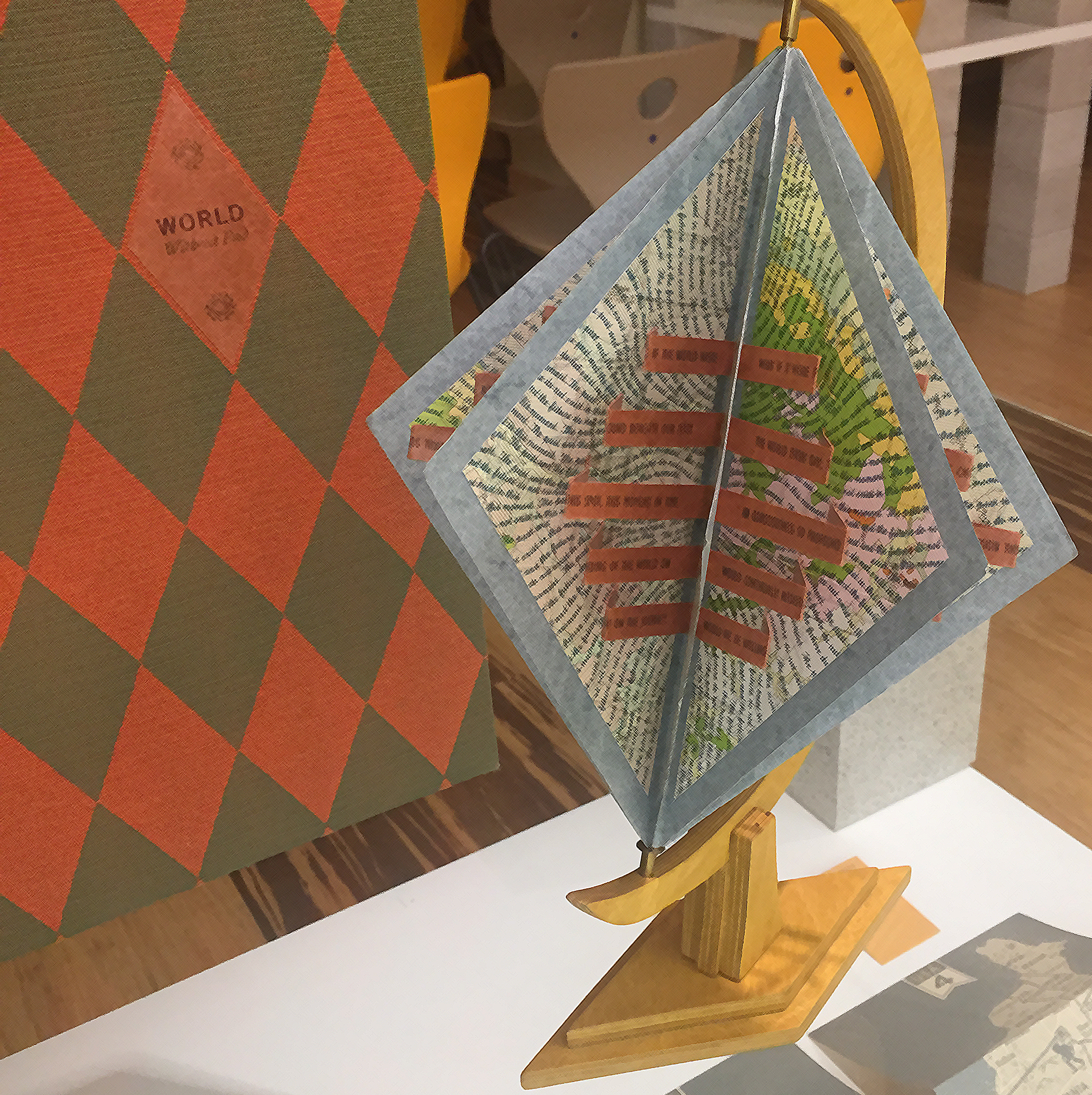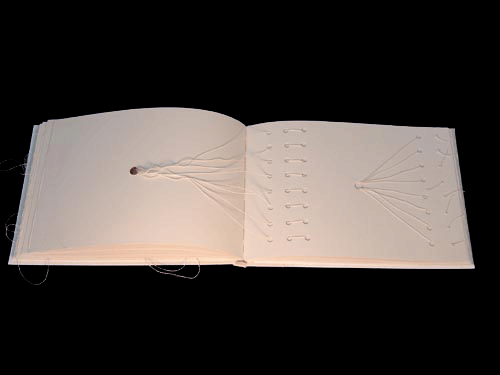Books as Aesthetic Objects


By Keith Smith
Book 91 by Keith Smith is considered one of the seminal works in the artists' book movement. Smith created this book, also known as "The String Book", in 1982, in an edition of 50 copies. The covers of the book have a string pattern, hinting at what's to be found inside. Upon opening the book, we find a cut page that reveals glimpses of the title page beneath it--one that is barely legible: the words are blind embossed on the page, listing simply the title, the artist, and the publisher. The fact that the text is not inked seems to emphasize just how unimportant text is in this book.
In fact, that's all the text we get. From here on out, the book is about light and shadow and the ever-changing compositions that appear on the surface of the pages. Multiple continuous lengths of string weave through the first half of the book through complex patterns of holes and knots, each page responding to the tensions created by the page before and the page that follows. The paper is a substantial weight Fabriano and the string is substantial, too. The play of these two elements creates sound as we turn the pages, more than we get with other books.
There is a quiet interlude as we leave the first half of the book and approach the second: pure white space, interrupted only by the thread that acts as the binding, down through the gutter, and the slight embossing of a circle in the center of the verso page, along with the even slighter corresponding debossing of the same circle in the center of the recto page. And as we enter the second half, the experience is literally quieter: There is less noise--both the visual and the audio varieties. There is generally more white space, the compositions are made of fewer holes, and there is much less string running through the pages. The patterns created are less complex and more elegant, until finally the string just ends in one knot. All that's left then are holes, and even they fade away as we turn the pages towards the end. Less and less light streams through, punched holes return again to embossed circles, and in the end, we are left with a blank canvas.
- Judith Klau